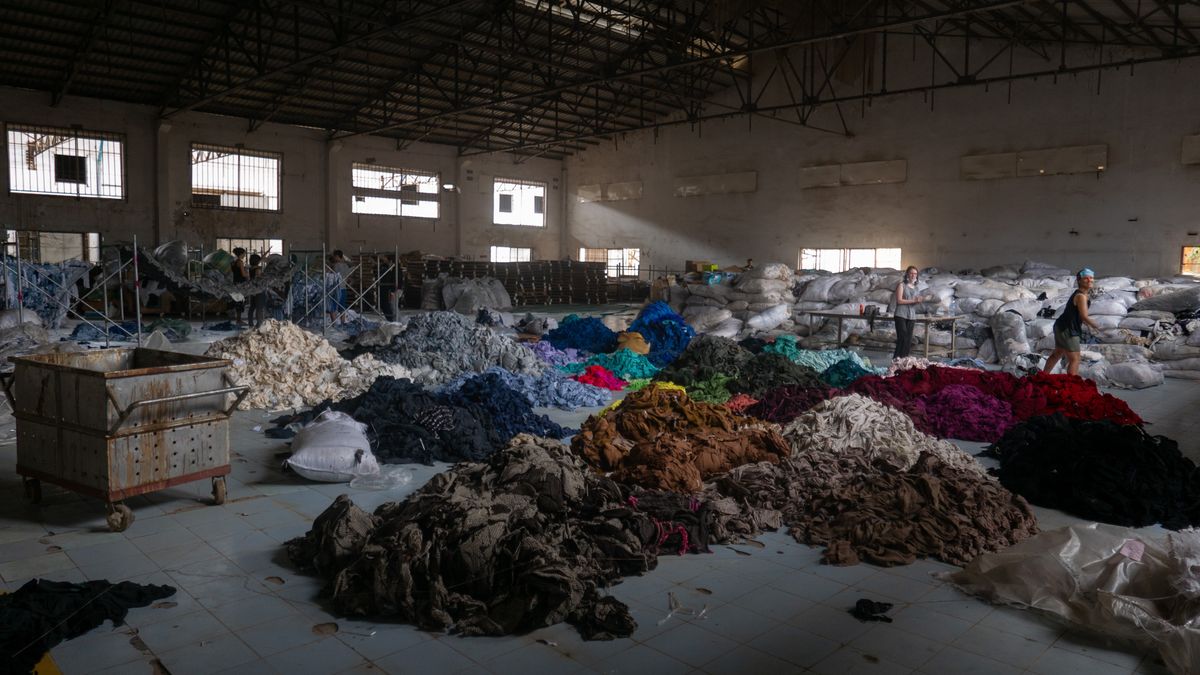Textile Recycling: A Quick Overview
Did you know that your textiles could be recycled? Read on to learn about how and where textiles are recycled.

Did you know that textiles can be reused, recycled and repurposed for several lifecycles? Still, they’re often thrown in the trash before they’re able to reach their full potential, adding to the large amount of waste that gets thrown in landfills each year. According to the EPA, the recycling rate for all textiles in 2018 was 14.7 percent, amounting to 2.5 million tons recycled. While this is a considerable number of recycled materials, this is only a small fraction compared to the 17 million tons of textile waste sent to landfills that year.
Numerous factors contribute to the low textile recycling rate; however, with some learned knowledge and changes to recycling practices, businesses can reduce the amount of textile waste they toss into landfills each year. As the leading contributor to textile waste, businesses in the apparel industry must understand the impacts of textile recycling and dispose of their materials responsibly to minimize the environmental effects and further reduce their waste.
What Is Textile Recycling?
Throwing textiles in the trash is more harmful than it appears. After burying textile materials in a landfill, It can take over 200 years to decompose fully. Additionally, while the materials are decomposing, they release greenhouse methane gas, dyes and toxic chemicals into the groundwater and soil, which is detrimental to the environment. To mitigate the issue, textile recycling is keeping clothing in the circular loop.
The recycling process begins by collecting materials such as old clothing, fabrics and scraps left from production. The textiles are then sorted by the type of material before being reused or reprocessed into a new product. Virtually all textiles can be recycled, but most recycling facilities do not have the technology or capability to recycle all types of material. However, fabrics made entirely of natural materials like wool or cotton are easiest to sort and recycle, so they are preferable at recycling facilities.
According to Close The Loop, the only way to recycle natural materials is through a mechanical process that involves stripping a product down into short fibers before mixing the material with longer fibers for added strength. For synthetic textiles, the process is different. Since synthetic materials are plastic, they can be broken down, melted and spun into new fibers to create new products.
Unfortunately, the process isn’t as straightforward for mixed materials. The majority of mixed materials cannot be recycled and are sent to landfills because the process of separating materials is too complex. In order to recycle a product made from a blend of synthetic and natural materials, each material must be extracted and divided into its respective parts. The effort to separate each piece of fabric is tedious, time-consuming and oftentimes impossible.
Business Concern About Textile Recycling
New York-based nonprofit FABSCRAP collects, processes and repurposes materials to help meet the fashion capital’s textile waste needs. The company focuses its efforts specifically on commercial waste and partners with businesses around the city to divert textile waste from landfills as much as possible.
According to FABSCRAP Founder and CEO Jessica Schreiber, the greatest concern businesses have before partnering with them is protecting proprietary logos and trademark designs on garments. To address those concerns, FABSCRAP created a separate recycling stream specifically made for proprietary materials.
“We have two different recycling streams to address some of those proprietary concerns,” said Schreiber. “If brands send proprietary material, it will only get shredded and recycled, never resold. Before FABSCRAP, their options were landfill or incineration, so this is a much better alternative that still… protects their logos and trademark patterns.”
Textile companies aren’t the only place to send unwanted clothing to be recycled. As more brands move towards sustainability and circularity in fashion, recycling initiatives and sustainable lines within clothing brands are becoming more common.
Recycling Initiatives
Recycling initiatives are programs where brands partner with recycling facilities to dispose of buyer textile waste. Rather than having consumers trash or look for textile companies to throw away their clothing, they have the option to send unwanted garments to brands to dispose of responsibly.
The type of materials a company accepts varies depending on the brand and its partners. Some companies only recycle clothing from their sustainable collections, while others accept specific types of material from anywhere. The process for each company is different, but the goal is to encourage people to take the initiative to recycle their clothing and be more sustainable.
Megan McSherry, environmental activist and sustainable lifestyle blogger, said recycling initiatives are part of becoming more sustainable but are not the ultimate solution.
“The overconsumption and overproduction have to be part of the conversation with circularity,” she said. “I think this idea of circular products has to go hand in hand with products that will last longer because that’s the other huge issue in the fashion industry.”
McSherry suggests that brands start using more sustainable materials, avoid blends and extend sustainable collections to the rest of the products a company sells.
“You can start rolling it out with a small collection, but you have to say ‘we have the intention of rolling this out to everything,’” she said. “Otherwise, you're just trying to appeal to the people who want to make a better decision but might not know that they are still supporting an unsustainable company.”
To Schreiber, brand textile recycling initiatives in the fashion industry have been used to push responsibility on the consumers. The best way for companies to be more sustainable, according to her, is to make internal changes before the point of sale.
“Consumers bear a lot of the responsibility for the end of [a product’s] life and even as businesses start to roll out take-back programs or rental programs, that’s all still dependent on the consumer,” she said. “It’s a lot easier to make changes internally and control those changes.”
Since there are many different facets to sustainability, she also suggests that brands address and fix internal issues surrounding social justice, human rights, materials use and effective design within their production process.
As previously stated, diverting textile waste to recycling is not the best end solution - eliminating it is. However, for materials that have already been produced, textile recycling is an effective mitigation technique that promotes sustainability and lowers the environmental impact of a product. As the future of fashion increasingly becomes more circular, it’s important to adopt practices that reduce the number of new materials coming into the production process. At Dhakai, we’re also taking strides towards sustainability through ethical and compliant sourcing. Through our simplified strategy, we strive to make sustainable sourcing accessible to all.
Interested in learning more? Sign up at dhakai.com/registration to get started.




